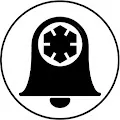0:00
Hello everyone! In our previous tutorial, we created a default workbook template
0:04
Whenever we create a new workbook, Excel automatically applies this template. However, when we add a new sheet by clicking the plus sign at the bottom
0:12
Excel inserts a blank sheet without any predefined headers or formatting. This is because the workbook template applies only to new workbooks
0:20
not to new worksheets within those workbooks. To ensure that each new worksheet inherits our preferred layout and formatting
0:26
we need to create a default sheet template. By doing so, every newly inserted worksheet will start with the customized settings we've established
0:34
To create a custom default worksheet template in Excel, open your Excel workbook containing your desired formatting and headers
0:41
Ensure only one worksheet remains active. Delete any extra sheets. Click on the File tab, then select Save As
0:48
In the Save as Type drop-down menu, choose ExcelTemplate.xltx since our sheet does not contain macros
0:55
If macros are included, select ExcelMacroEnabledTemplate.xltm. Navigate to the Excel Start folder where Excel looks for default templates
1:04
You can find this folder as demonstrated in the video. Name your template file Sheet.xltx
1:10
This file will serve as your customized default worksheet template and restart Excel
1:14
Press Control-N to create a new workbook. Now, whenever you insert a new sheet into the workbook by clicking the plus icon at the bottom
1:21
Excel will use your Sheet.xltx template. This ensures that each new sheet inherits your specified headers and formatting
1:28
maintaining consistency throughout your workbook. Thank you for watching. If you found this tutorial helpful, please consider liking, sharing, and subscribing for more
1:37
Your support is greatly appreciated


